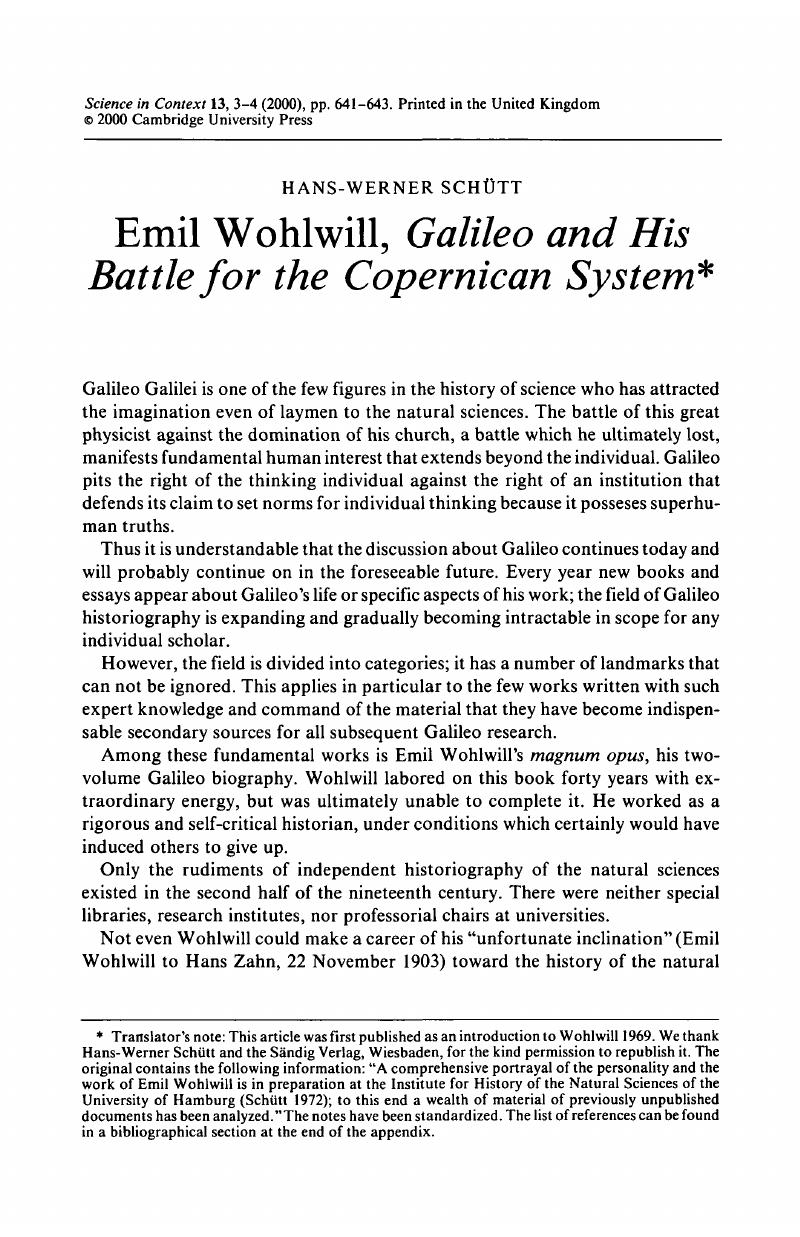Article contents
Emil Wohlwill, Galileo and His Battle for the Copernican System*
Published online by Cambridge University Press: 26 September 2008
Abstract

- Type
- Appendix: A Forgotten Controversy
- Information
- Copyright
- Copyright © Cambridge University Press 2000
Footnotes
Translator's note: This article was first published as an introduction to Wohlwill 1969. We thank Hans-Werner Schütt and the Säandig Verlag, Wiesbaden, for the kind permission to republish it. The original contains the following information: “A comprehensive portrayal of the personality and the work of Emil Wohlwill is in preparation at the Institute for History of the Natural Sciences of the University of Hamburg (Schütt 1972); to this end a wealth of material of previously unpublished documents has been analyzed.” The notes have been standardized. The list of references can be found in a bibliographical section at the end of the appendix.
References
* Translator's note: This article was first published as an introduction to Wohlwill 1969. We thank Hans-Werner Schütt and the Säandig Verlag, Wiesbaden, for the kind permission to republish it. The original contains the following information: “A comprehensive portrayal of the personality and the work of Emil Wohlwill is in preparation at the Institute for History of the Natural Sciences of the University of Hamburg (Schütt 1972); to this end a wealth of material of previously unpublished documents has been analyzed.” The notes have been standardized. The list of references can be found in a bibliographical section at the end of the appendix.
- 1
- Cited by




